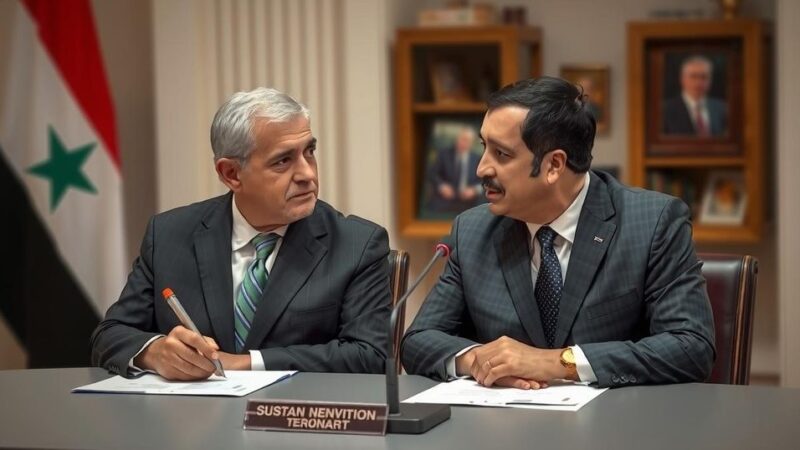The Israel Defense Forces have escalated military operations in Lebanon, targeting southern Beirut amidst ongoing conflicts. Strikes in the West Bank have led to additional casualties. The conflict, rooted in years of tension, has led to substantial deaths and a humanitarian crisis in Gaza, compounded by international involvement from the United States.
The ongoing confrontation in the Middle East has escalated significantly as the Israel Defense Forces (IDF) intensify their operations in Lebanon. Recent airstrikes have targeted the southern suburbs of Beirut, striking military personnel and emergency responders. Concurrently, the IDF executed a separate airstrike in the West Bank aimed at Hamas’ regional leader in Tulkarm, resulting in the deaths of at least 18 individuals, as reported by Palestinian authorities. The roots of this conflict can be traced back to the onset of heightened tensions following a cross-border assault on Israel by Hamas militants on October 7, which resulted in approximately 1,200 fatalities and numerous civilian hostages. In retaliation, the Israeli government declared war on Hamas, commencing a ground invasion that has led to the largest consequential displacement in the region since Israel’s establishment in 1948. The situation exacerbated with the death of Hamas’s leader, Ismail Haniyeh, in 2024, an incident believed to be attributed to Israeli actions. In parallel, hostilities with Hezbollah, an Iran-backed militia, have worsened, leading to extensive Israeli military engagement in southern Lebanon resulting in over 1,400 casualties, including the death of Hezbollah’s long-standing leader, Hasan Nasrallah. The Israel-Lebanon border has been marked by a long-standing history of violence since the foundation of Israel. Turning to the Gaza Strip, Israel’s actions have resulted in devastating consequences, with tens of thousands killed and a significant portion of the Gazan population plunged into severe humanitarian crises likened to famine. Despite international calls, Israel has maintained restrictive measures limiting the flow of humanitarian aid into Gaza. In the context of U.S. involvement, despite the strained relations between Israeli Prime Minister Benjamin Netanyahu and some U.S. officials, including President Biden, the United States continues to provide military support to Israel through arms supplies and financial aid packages, while also utilizing its influence at the United Nations to negate calls for a cease-fire.
The current escalation between Israel and Lebanon is a continuation of a complicated history of conflict in the region. The Israeli-Palestinian conflict has deep-rooted historical, political, and social dimensions that date back to before Israel’s statehood in 1948. The tensions have spilled over into neighboring regions, with Hezbollah in Lebanon becoming increasingly aggressive in response to Israeli military actions. The humanitarian crises resulting from the ongoing war in Gaza have drawn significant international attention and concern, yet Israeli policies remain stringent against the influx of aid. The involvement of the United States in supporting Israel adds another layer to this regional turmoil, further complicating the diplomatic landscape.
In conclusion, the escalation of military actions by the Israel Defense Forces in Lebanon and the intensified conflict within Gaza exemplify the severe humanitarian and political crisis unfolding in the region. The intertwined history of conflict, the relentless hostilities between Israel and its adversaries, and the complex involvement of international actors such as the United States highlight the urgent need for diplomatic resolutions to prevent further deterioration of the situation.
Original Source: www.washingtonpost.com







